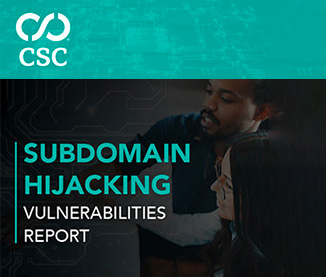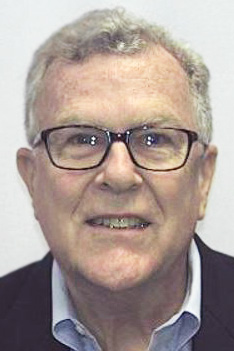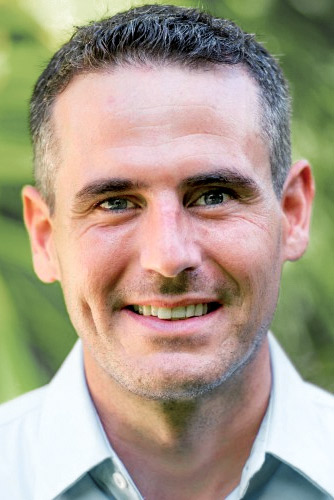

Brand Protection |
Sponsored by |

|



 With DNS abuse a topic of increased concern throughout the community, any controversy over adopting the Uniform Rapid Suspension System (URS) for all generic top-level domains (gTLDs) seems misplaced. The URS was designed as a narrow supplement to the Uniform Domain-Name Dispute Resolution Policy (UDRP), applicable only in certain tightly defined circumstances of clear-cut and incontrovertible trademark infringement involving the registration and use of a domain name. more
With DNS abuse a topic of increased concern throughout the community, any controversy over adopting the Uniform Rapid Suspension System (URS) for all generic top-level domains (gTLDs) seems misplaced. The URS was designed as a narrow supplement to the Uniform Domain-Name Dispute Resolution Policy (UDRP), applicable only in certain tightly defined circumstances of clear-cut and incontrovertible trademark infringement involving the registration and use of a domain name. more
 The Internet Commerce Association has been actively involved for the last four years on the ICANN Working Group reviewing the Uniform Rapid Suspension (URS) policy and the Uniform Domain Name Dispute Resolution Policy (UDRP). The Working Group is currently wrapping up its review of the URS. The UDRP will be reviewed in an upcoming second phase. more
The Internet Commerce Association has been actively involved for the last four years on the ICANN Working Group reviewing the Uniform Rapid Suspension (URS) policy and the Uniform Domain Name Dispute Resolution Policy (UDRP). The Working Group is currently wrapping up its review of the URS. The UDRP will be reviewed in an upcoming second phase. more
 In the United States, at least 25,000 brick and mortar businesses will close in 2020 due to the Coronavirus (source: Coresight). I believe this will only be the tip of the iceberg. The businesses that fight to stay alive will become 100% dependent on the Internet to generate their revenue. No longer able to rely on foot traffic to their old brick and mortars, the popularity and brand-ability of their websites will solely dictate their ability to survive in the coming years. more
In the United States, at least 25,000 brick and mortar businesses will close in 2020 due to the Coronavirus (source: Coresight). I believe this will only be the tip of the iceberg. The businesses that fight to stay alive will become 100% dependent on the Internet to generate their revenue. No longer able to rely on foot traffic to their old brick and mortars, the popularity and brand-ability of their websites will solely dictate their ability to survive in the coming years. more
 I stumbled upon a study conducted by Microsoft eons ago back in the paleolithic era of search; 2012... It is about how "premium domains" are perceived by the consumer when seeing them in the search results compared to a lower value "non-premium" domain. I like to use quotations sparingly, but I felt it was necessary because the varying opinions on premium v non-premium domains is a bridge I do not want to cross in this post. more
I stumbled upon a study conducted by Microsoft eons ago back in the paleolithic era of search; 2012... It is about how "premium domains" are perceived by the consumer when seeing them in the search results compared to a lower value "non-premium" domain. I like to use quotations sparingly, but I felt it was necessary because the varying opinions on premium v non-premium domains is a bridge I do not want to cross in this post. more
 Does the ICANN Board putting its thumb on the scale, change the status quo assumption of a Policy Development Process (PDP)? The primary assumption of most PDPs is that, in the absence of consensus for change, the status quo remains. Otherwise, Policy would be made by fiat by the PDP's Chair or Co-Chairs and there would be a mad rush to occupy those unpaid, thankless positions. more
Does the ICANN Board putting its thumb on the scale, change the status quo assumption of a Policy Development Process (PDP)? The primary assumption of most PDPs is that, in the absence of consensus for change, the status quo remains. Otherwise, Policy would be made by fiat by the PDP's Chair or Co-Chairs and there would be a mad rush to occupy those unpaid, thankless positions. more
 It is not surprising that the phase 1 review of domain name rights protection mechanisms is delayed, but it is a bit of a surprise that in responding to a question posed in 2020, business executives and their lawyers replied with answers first offered and rejected five years earlier. In that time before COVID-19, the launch of the Vox Populi Registry and its dotSucks domain names drew quite a lot of attention. more
It is not surprising that the phase 1 review of domain name rights protection mechanisms is delayed, but it is a bit of a surprise that in responding to a question posed in 2020, business executives and their lawyers replied with answers first offered and rejected five years earlier. In that time before COVID-19, the launch of the Vox Populi Registry and its dotSucks domain names drew quite a lot of attention. more
 GenX-ers may remember spending a summer afternoon at the movie theater and seeing the somewhat corny but beloved antics of Marty McFly and Doc as they used a souped-up Delorean to travel the space-time continuum. In Back to the Future Part II, Doc and Marty travel into the future, where the bullying, boorish Biff causes a time-travel paradox when he steals the Delorean and takes a joyride into the past to give his younger self a sports almanac containing the final scores of decades worth of sporting events. more
GenX-ers may remember spending a summer afternoon at the movie theater and seeing the somewhat corny but beloved antics of Marty McFly and Doc as they used a souped-up Delorean to travel the space-time continuum. In Back to the Future Part II, Doc and Marty travel into the future, where the bullying, boorish Biff causes a time-travel paradox when he steals the Delorean and takes a joyride into the past to give his younger self a sports almanac containing the final scores of decades worth of sporting events. more
 Over the course of the last decade, in response to significant pressure from the US government and other governments, service providers have assumed private obligations to regulate online content that have no basis in public law. For US tech companies, a robust regime of "voluntary agreements" to resolve content-related disputes has grown up on the margins of the Digital Millennium Copyright Act (DMCA) and the Communications Decency Act (CDA). more
Over the course of the last decade, in response to significant pressure from the US government and other governments, service providers have assumed private obligations to regulate online content that have no basis in public law. For US tech companies, a robust regime of "voluntary agreements" to resolve content-related disputes has grown up on the margins of the Digital Millennium Copyright Act (DMCA) and the Communications Decency Act (CDA). more
 For years, corporate domain name portfolio managers have struggled with determining whether or not their portfolios were the "right" size. Managers of mature domain name portfolios have often felt that their portfolios were bloated, containing domains that were no longer needed. Conversely, domain managers of newer portfolios have sometimes known that gaps existed. Regardless, the question remains -- just how many domains should a corporate portfolio contain? more
For years, corporate domain name portfolio managers have struggled with determining whether or not their portfolios were the "right" size. Managers of mature domain name portfolios have often felt that their portfolios were bloated, containing domains that were no longer needed. Conversely, domain managers of newer portfolios have sometimes known that gaps existed. Regardless, the question remains -- just how many domains should a corporate portfolio contain? more
 After being in the domain industry for over 15 years, there aren't too many things that catch me by surprise, but recently a few UDRP filings have me scratching my head. Both ivi.com and ktg.com have had UDRPs filed against them, and I have to say for anyone holding a valuable domain name, it's a cautionary tale and one that should have folks paying attention to the outcome of each. more
After being in the domain industry for over 15 years, there aren't too many things that catch me by surprise, but recently a few UDRP filings have me scratching my head. Both ivi.com and ktg.com have had UDRPs filed against them, and I have to say for anyone holding a valuable domain name, it's a cautionary tale and one that should have folks paying attention to the outcome of each. more
 After its first edition in Valencia, Brands and Domains will travel this time to the Netherlands where the second conference will take place from the 2nd to 3rd of October 2017. This time, Dot Stories, the main organizer, chose the Hotel Amrath Kurhaus for the event. Nowadays, more than 600 applicants hold already the right to start their own dot brand, but there are not so many who have been brave enough to use it. more
After its first edition in Valencia, Brands and Domains will travel this time to the Netherlands where the second conference will take place from the 2nd to 3rd of October 2017. This time, Dot Stories, the main organizer, chose the Hotel Amrath Kurhaus for the event. Nowadays, more than 600 applicants hold already the right to start their own dot brand, but there are not so many who have been brave enough to use it. more
 As I've written before, domain name disputes involving multiple trademarks sometimes raise interesting issues, including whether a panel can order a domain name transferred to one entity without consent of the other. While panels typically have found ways to resolve this issue, one particularly troubling fact pattern arises when a panel denies a complaint simply because a disputed domain name contains trademarks owned by two different entities. more
As I've written before, domain name disputes involving multiple trademarks sometimes raise interesting issues, including whether a panel can order a domain name transferred to one entity without consent of the other. While panels typically have found ways to resolve this issue, one particularly troubling fact pattern arises when a panel denies a complaint simply because a disputed domain name contains trademarks owned by two different entities. more
 On July 25th ICANN announced the publication of the Draft Report of the Independent Review of the Trademark Clearinghouse (TMCH). This study was coordinated for ICANN by the Analysis Group, in conjunction with researchers from the Center for Internet and Society at Stanford as well the University of Pennsylvania's Wharton School... while public comments on the draft report will be accepted through September 3rd, this Report was triggered by GAC concerns expressed before the Applicant Guidebook for the new gTLD program was even completed, and is not the work product of a GNSO-created working group and therefore will not directly result in the establishment of any new ICANN policy. more
On July 25th ICANN announced the publication of the Draft Report of the Independent Review of the Trademark Clearinghouse (TMCH). This study was coordinated for ICANN by the Analysis Group, in conjunction with researchers from the Center for Internet and Society at Stanford as well the University of Pennsylvania's Wharton School... while public comments on the draft report will be accepted through September 3rd, this Report was triggered by GAC concerns expressed before the Applicant Guidebook for the new gTLD program was even completed, and is not the work product of a GNSO-created working group and therefore will not directly result in the establishment of any new ICANN policy. more
"U.S. Authorities Charge Owner of Most-Visited Illegal File-Sharing Website with Copyright Infringement" – statement issued by United States Department of Justice on Thursday: "U.S. authorities have charged the alleged owner of today's most visited illegal file-sharing website with criminal copyright infringement and have seized domain names associated with the website." more
According to the latest report from The World Intellectual Property Organization (WIPO), trademark owners filed 2,754 cases under the Uniform Domain Name Dispute Resolution Policy (UDRP) with the agency in 2015 - an increase of 4.6 % over the previous year. more